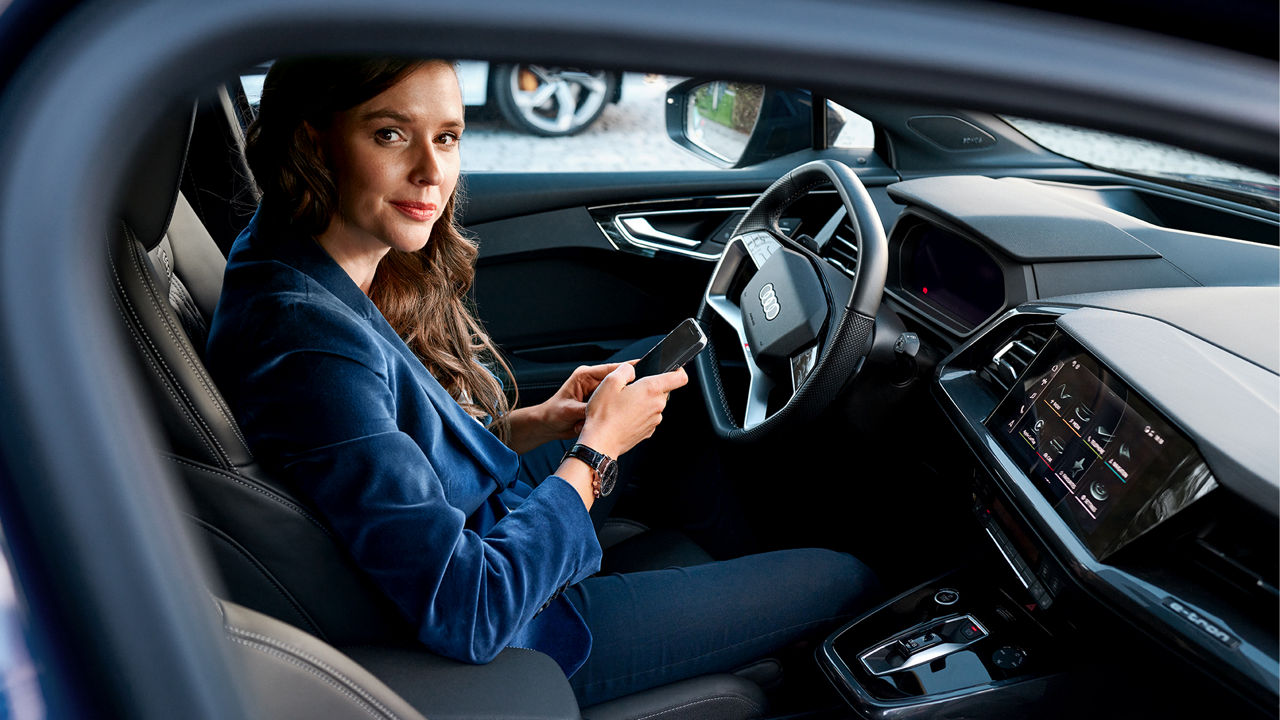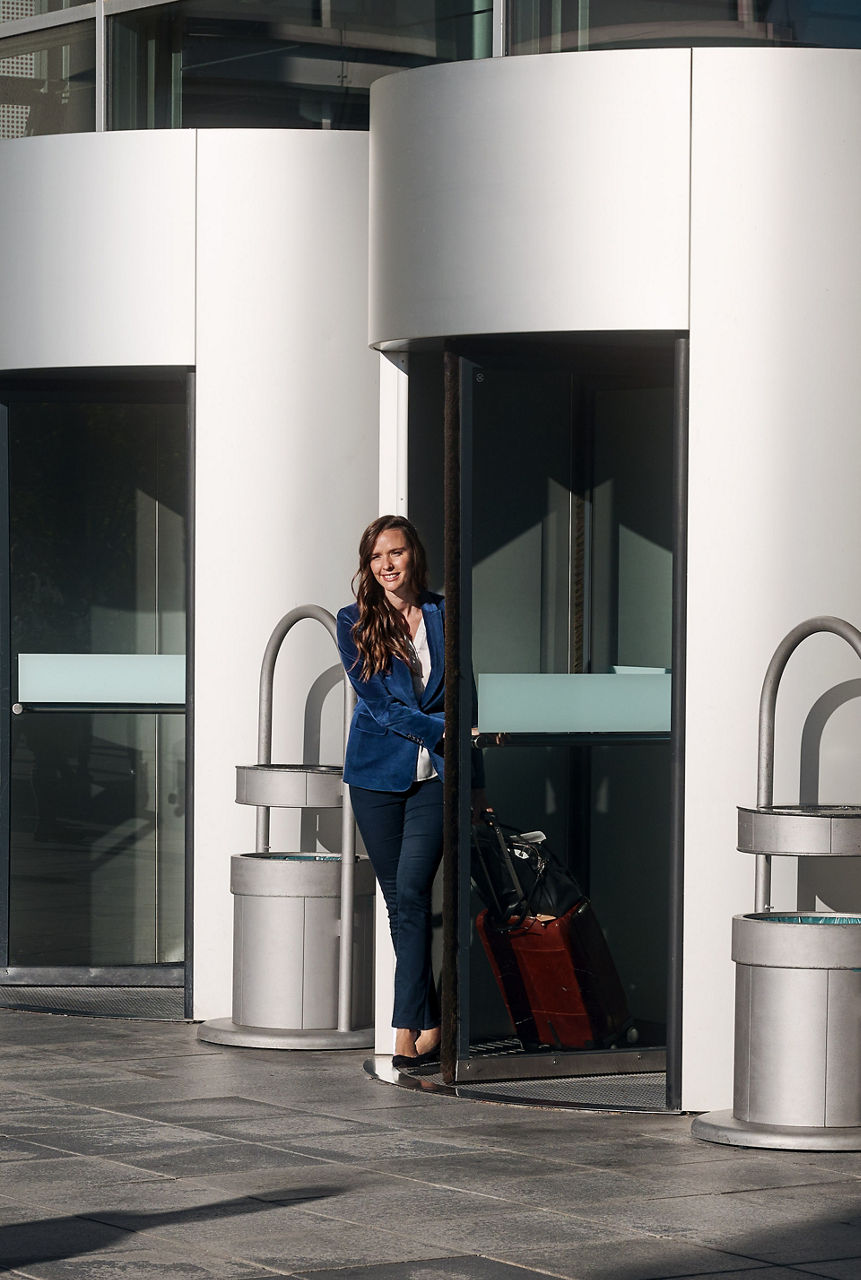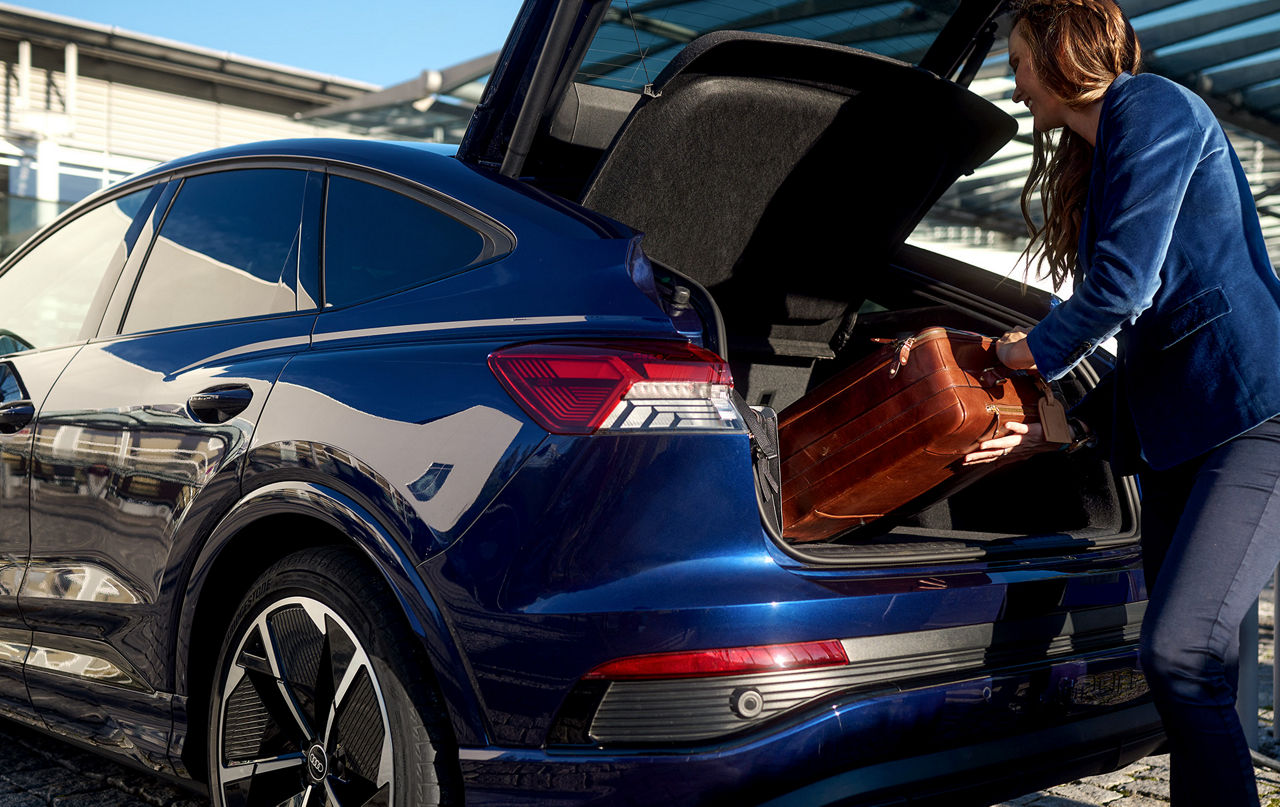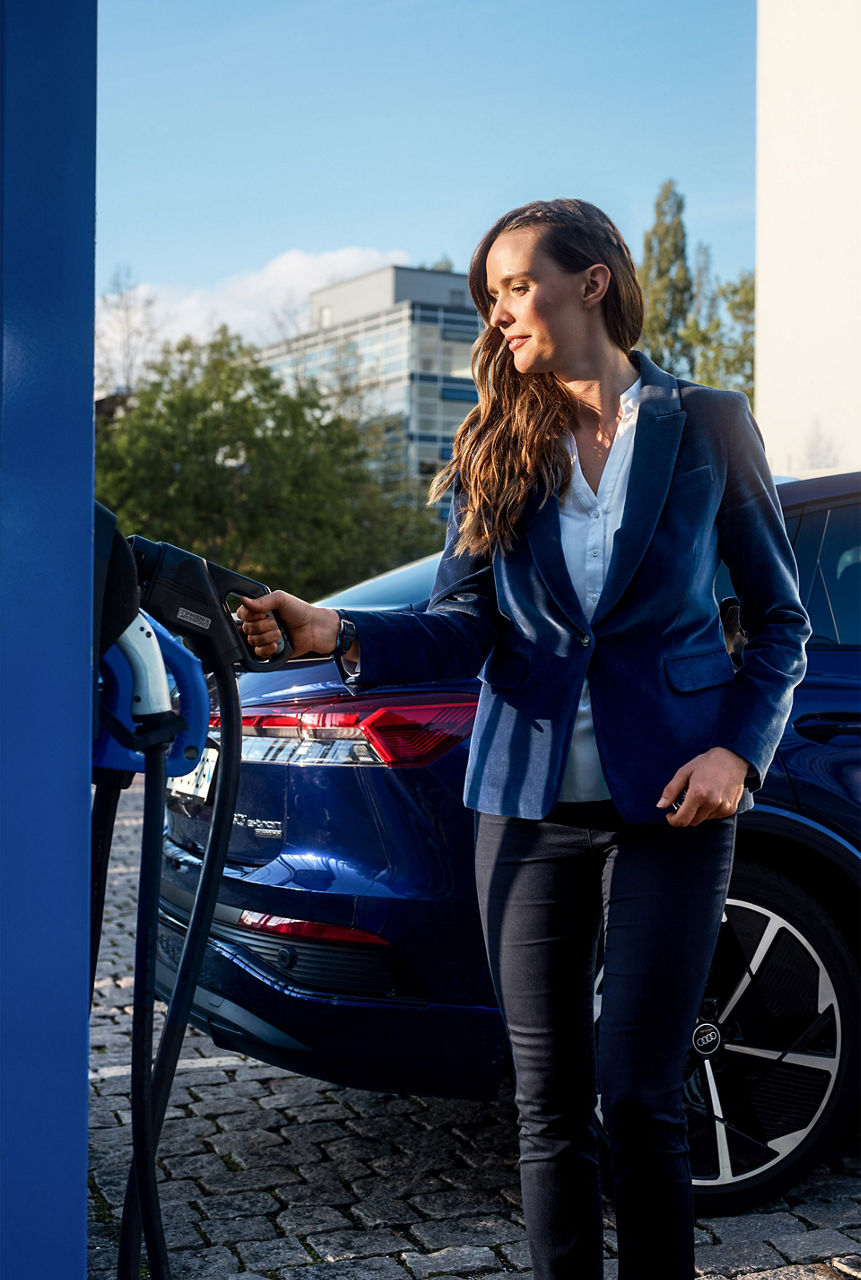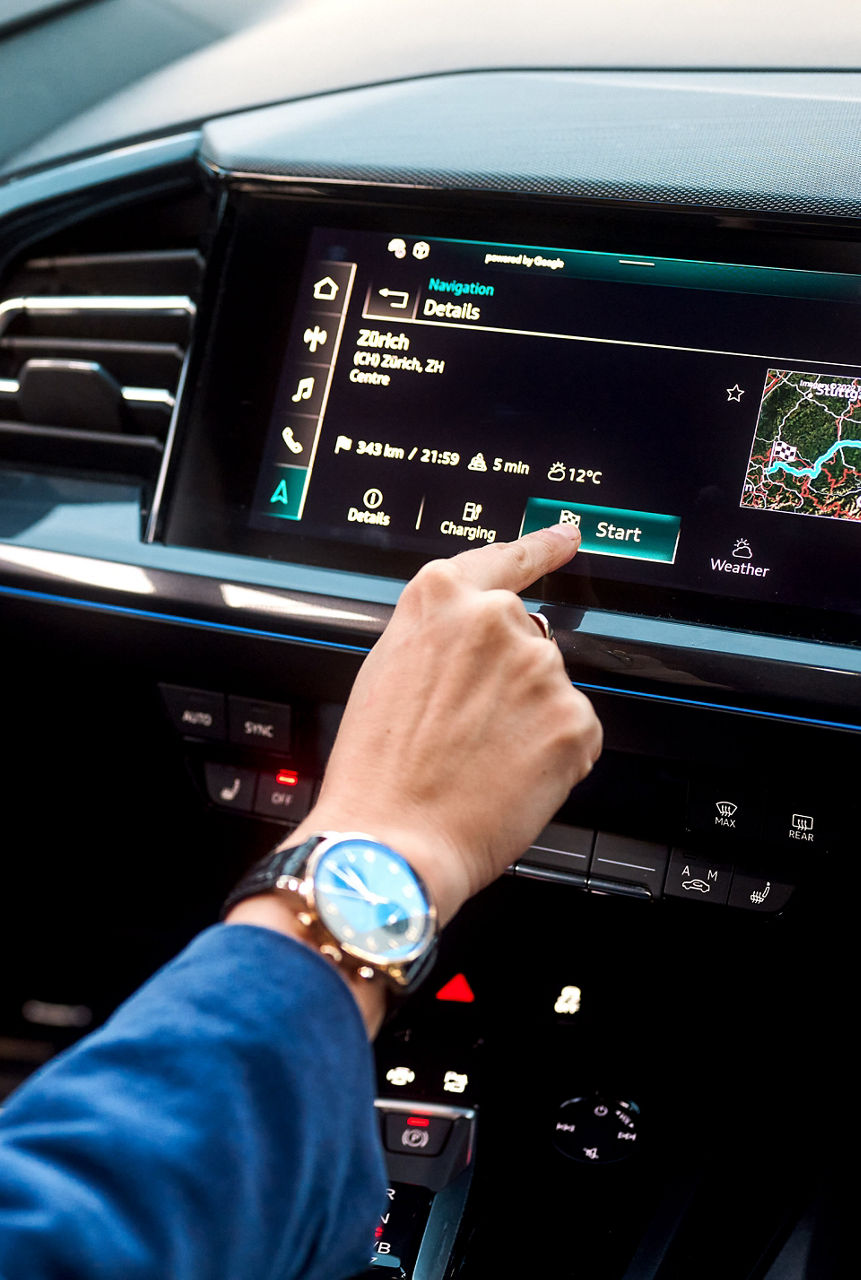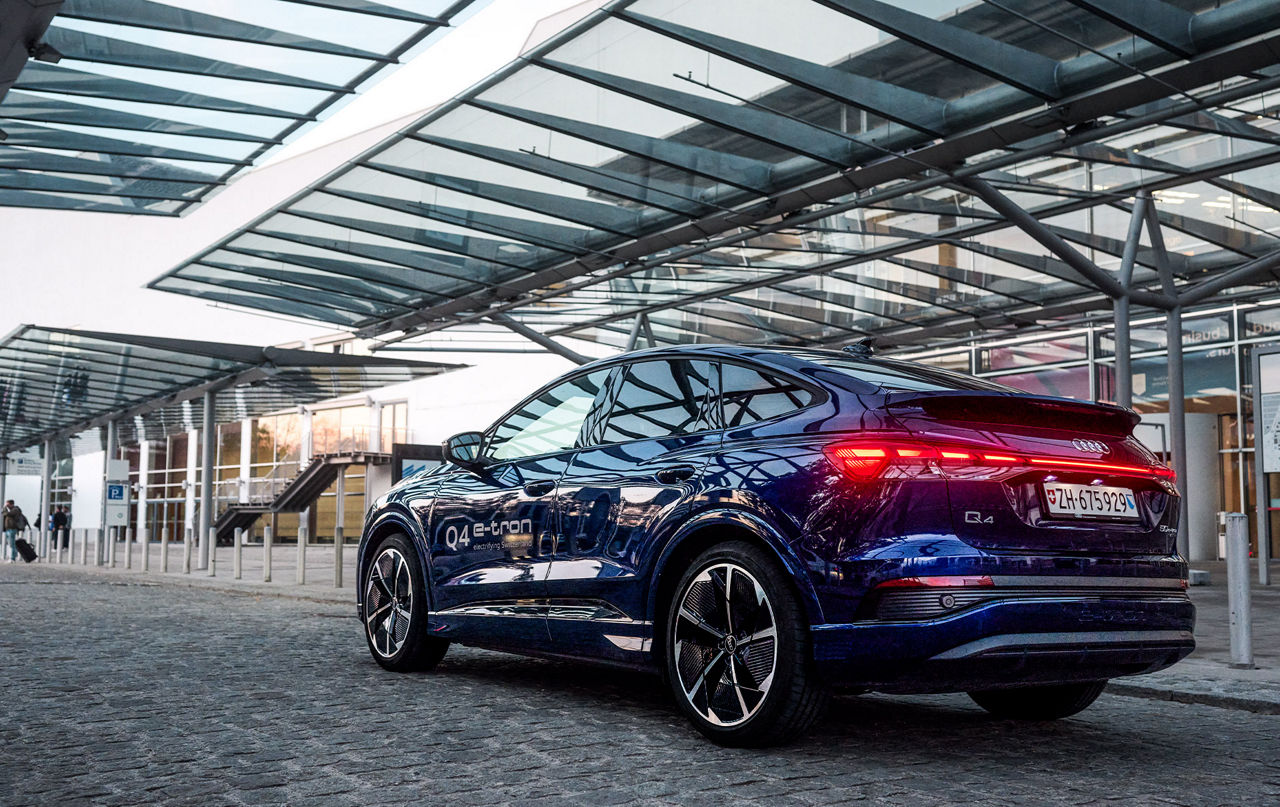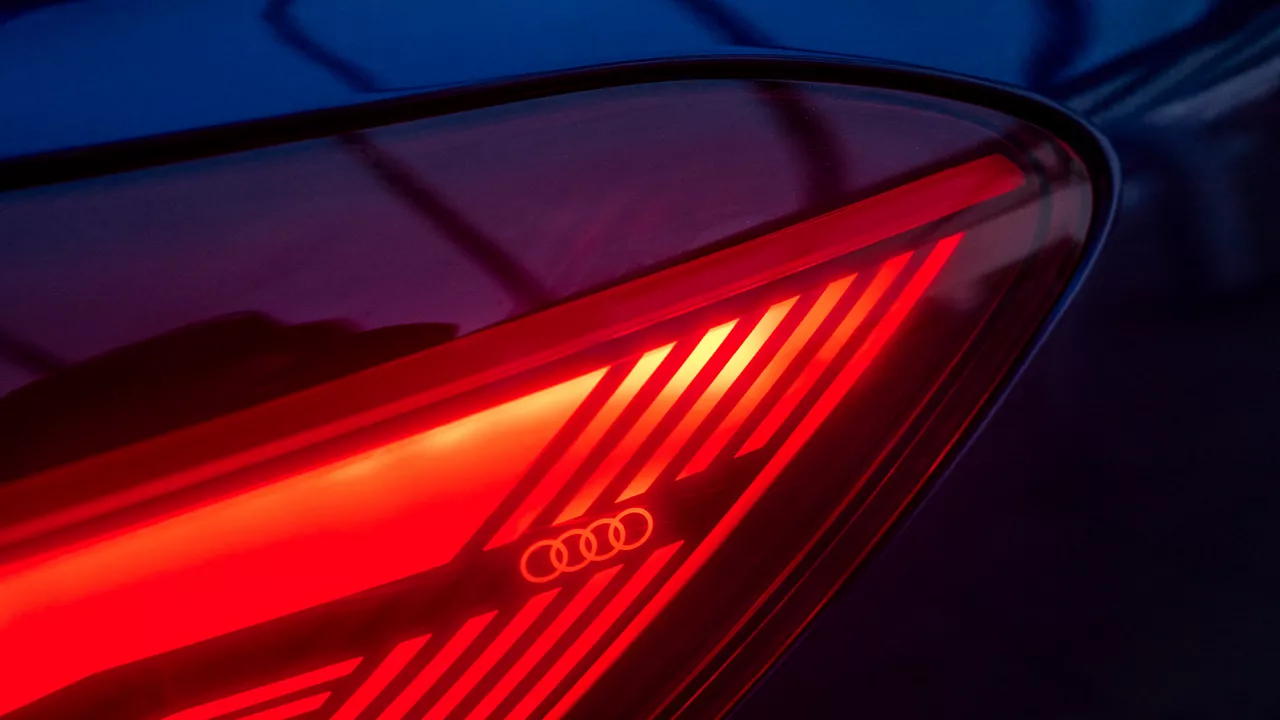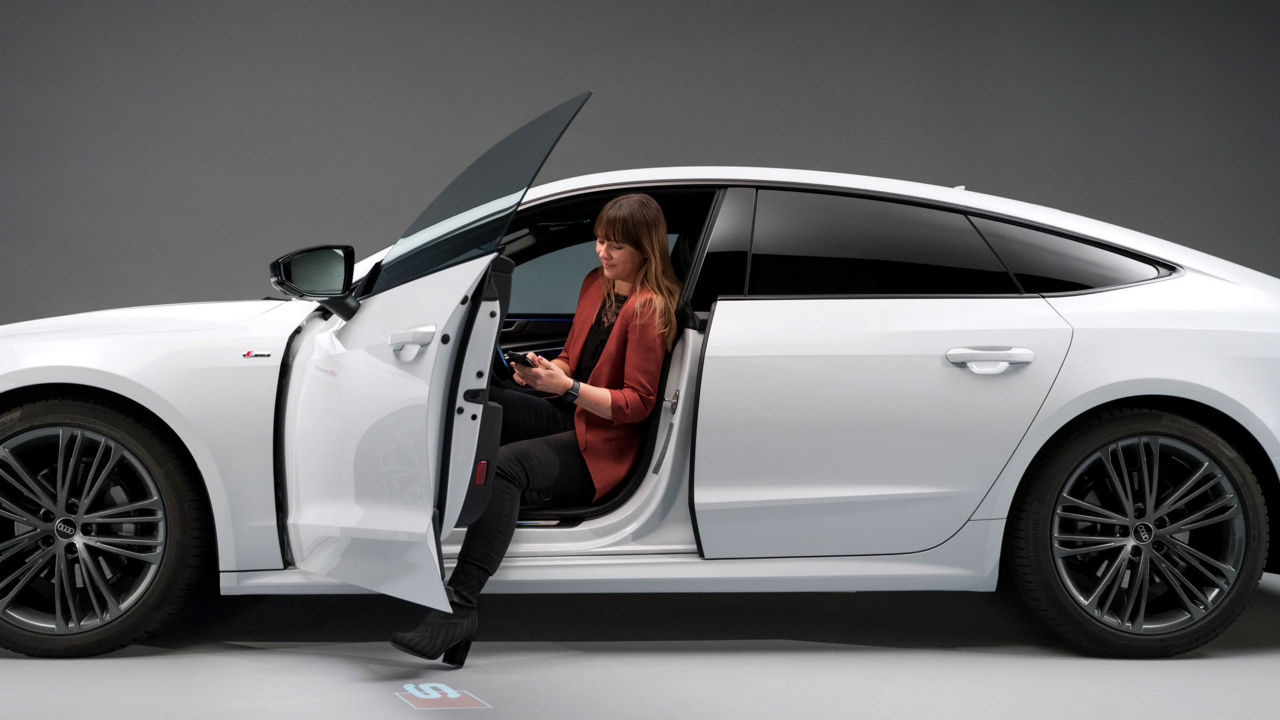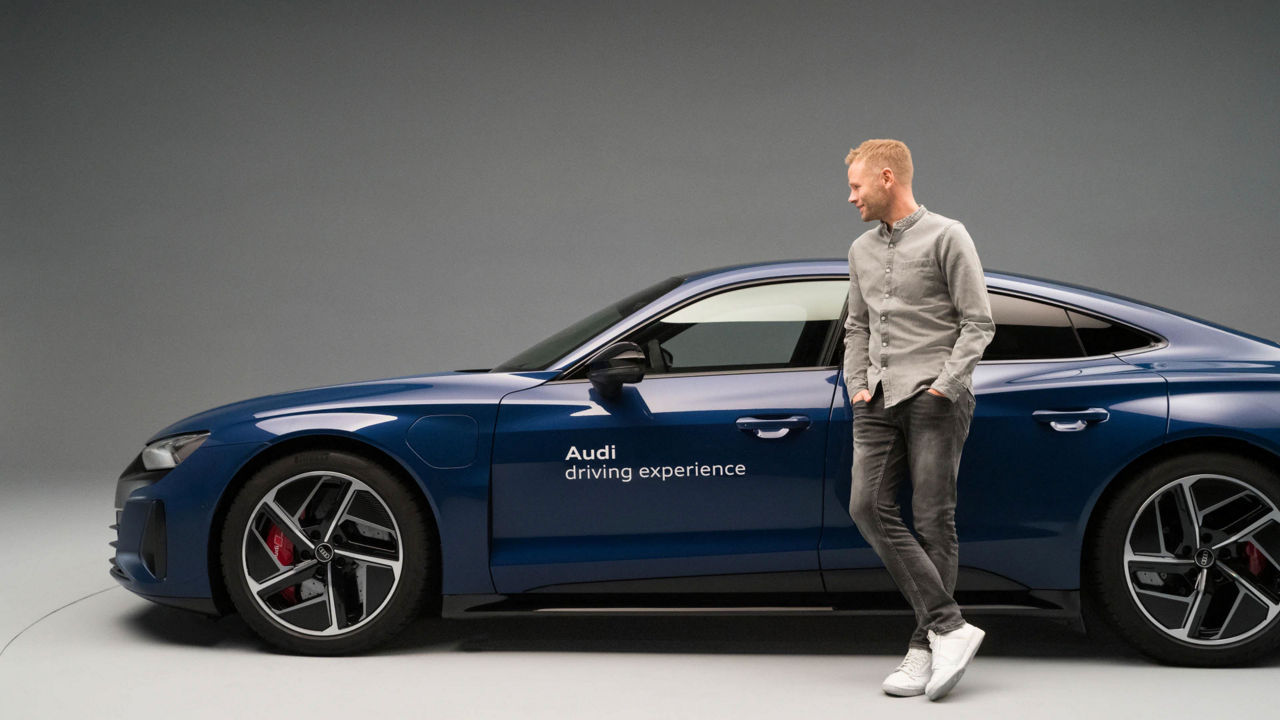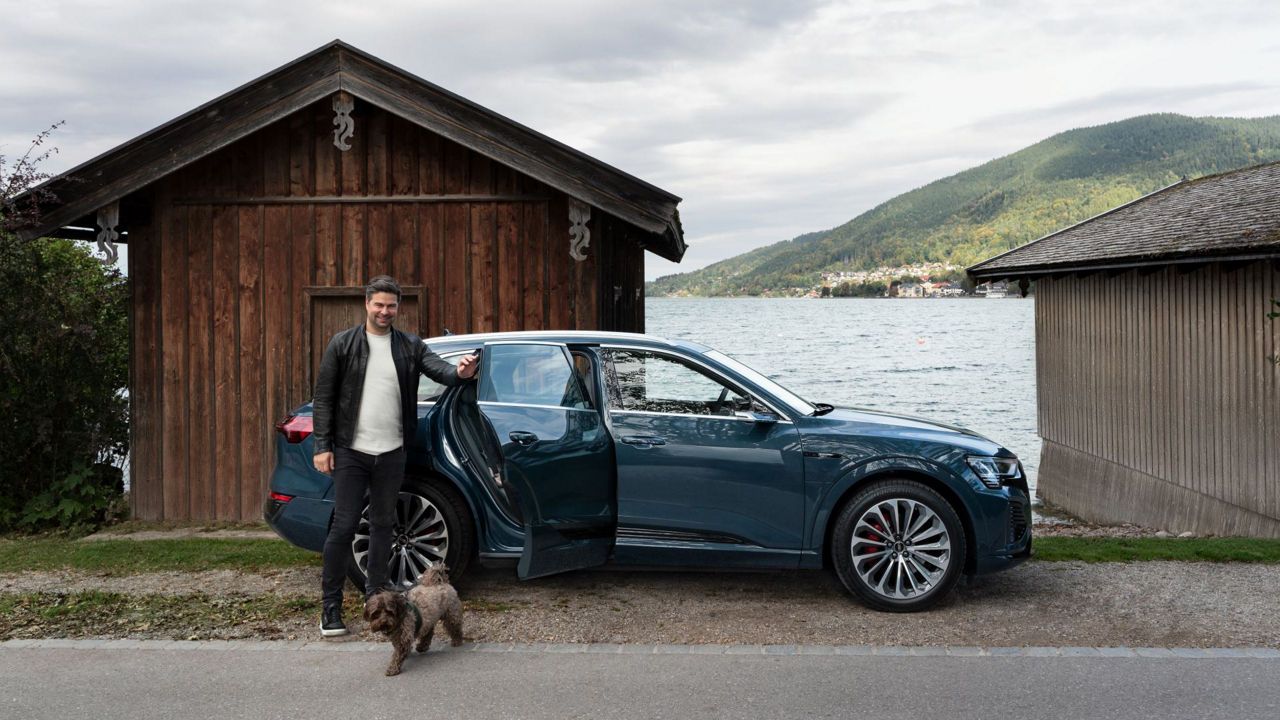The Audi Q4 Sportback is already her second e-tron model – actually, it’s her second car ever. Before that, Sunnie Groeneveld admits, she mainly used car sharing and, even more frequently than today, the train. Another car is not an option for her. “I'm often more flexible when I'm traveling by car than by train. But when I drive myself, I want to travel as sustainably as possible.” In her immediate environment, she used to be a pioneer in e-mobility, Groeneveld tells us. “When I got my first electric car from Audi, I didn't have any charging option at home, ” she explains. Thirty parking spaces for the apartment complex, but not a single charging station. “When I had appointments in the city, I took the opportunity and charged my car in a parking garage.” Then came an owners' meeting, and Sunnie Groeneveld was suddenly the champion of the cause. Today, every parking space in her neighbourhood has the option of adding a charging station.
The Swiss appreciates the flexibility that comes with having her own car. She considers it her mobile office. So, when she talks about her vehicle, it's mostly about connectivity or ease of use of the app. She particularly appreciates the fact that she can connect her smartphone automatically and, as she says, “seamlessly”, with the Audi Q4. Whereas the connectivity of mobility and one’s environment “is still in its very early stages.” This often becomes evident when charging the vehicle, Groeneveld explains. “There certainly is still room for improvement when it comes to the communication between infrastructure and user,” she says. She finds it important to maintain the iterative approach, to develop improvements from practical experience. “That's the DNA of digital projects and that's what this is all about. And all in all,” she admits as she drives away, “it does work in most cases.”
